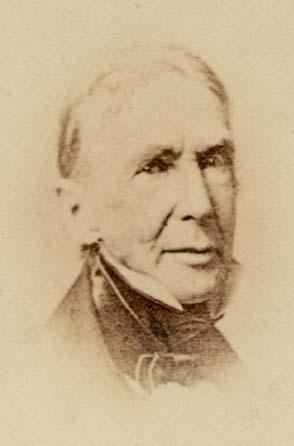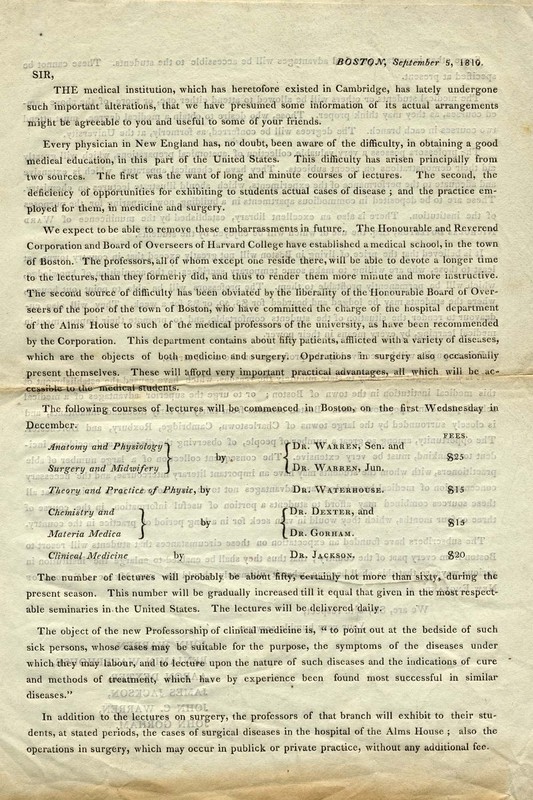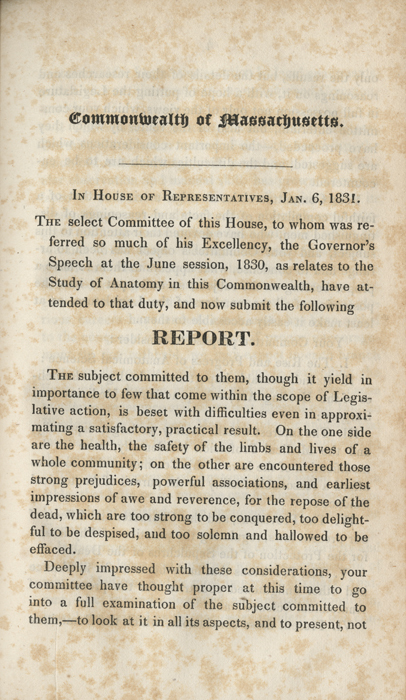From Cambridge to Boston
The first major changes in the faculty, course of study, and even location of Harvard Medical School occurred during the early years of the 19th century. Very few medical schools were active in the United States at this period—Dartmouth was the only other institution in New England—and the great majority of students received degrees from the University of Pennsylvania in Philadelphia, the nation's first medical school.
By 1810, the need for Harvard's students to have access to hospital patients and a longer course of lectures and the long commute from Boston by members of the faculty, particularly John Warren, prompted a relocation of the school to White's Buildings at 49 Marlborough [now Washington] Street, in Boston, in a building where John Collins Warren had delivered anatomical demonstrations. The students could then observe patients in the hospital department of the City Almshouse, the Marine Hospital at Charlestown, and, after its opening in 1821, the Massachusetts General Hospital. The Medical Faculty promoted the move, stating, "The opportunity, among so great a number of people, of observing the diseases and accidents incident to mankind, must be very extensive. The consequent collection of a large number of able practitioners with whom the students may have an important literary intercourse, and the necessary concentration of medical knowledge, are advantages not to be overlooked. It is obvious that all these sources combined may afford to students a portion of useful information, in the course of three or four months, which they would in vain seek for in a long period of practice in the country."
The curriculum of the Harvard Medical School was beginning to change as well, and a new professorship in clinical medicine was created and filled by Dr. James Jackson (1777-1867) just a few months before the Medical School's move across the Charles River. Students continued to pay individual faculty members by the course, and fees ranged from $10.00, for admission to lectures in midwifery and materia medica, to $20.00 for courses in anatomy and surgery. The lecture term opened in November and ran for just three months.
This first circular from the new location advertises the opportunity for students to examine patients at the Boston Almshouse on Leverett Street and announces the new professorship in clinical medicine.
The faculty was also concerned about the cost of medical education associated with the move and stated, “It is believed that the price of living in Boston will not greatly exceed that in country towns, at least to those, who are willing to make some temporary sacrifices to the acquisition of knowledge, which will be permanently profitable to them. The professors will be able to point out houses, where the students may be lodged and boarded for $3.50 or $3 for a week. They will also endeavour to render the situation of the students comfortable, and to promote their improvement in medical learning, by every means in their power.”
This state report provided key arguments for the repeal of the 1815 Act to Protect the Sepulchres of the Dead by the Massachusetts Legislature and so legalized dissection of human bodies for anatomical study. Dr. John Collins Warren, stressing the essential importance of dissection, stated, “Some may perhaps believe that books, and plates, and wax figures convey adequate notions of the human structure. This is an opinion natural enough, but entirely erroneous…. It is probable that a single square inch of the human body contains more parts distinctly organized, than could be represented by all the wax figures which ingenuity has ever contrived.” This copy belonged to Dr. John Collins Warren.
Harvard’s first professor of clinical medicine, James Jackson, found that the time spent with his students on the wards at Massachusetts General Hospital detracted from his formal lecturing, and so he published these brief notes of his lectures on physiology, hygiene, pathology, and therapeutics in 1816. The work proved popular with the students, and Jackson expanded it into the Text Book of a Course of Lectures on the Theory and Practice of Physic in 1825.
This copy of the Syllabus is interleaved with the manuscript notes of Sumner Cummings (1800-1848), who studied medicine at Harvard during the winter of 1821.





